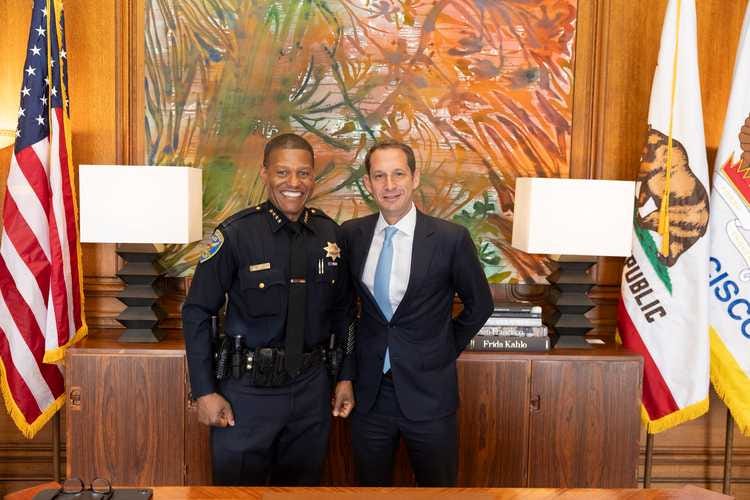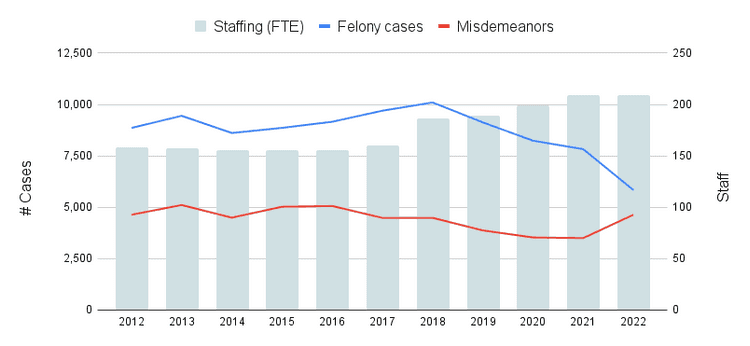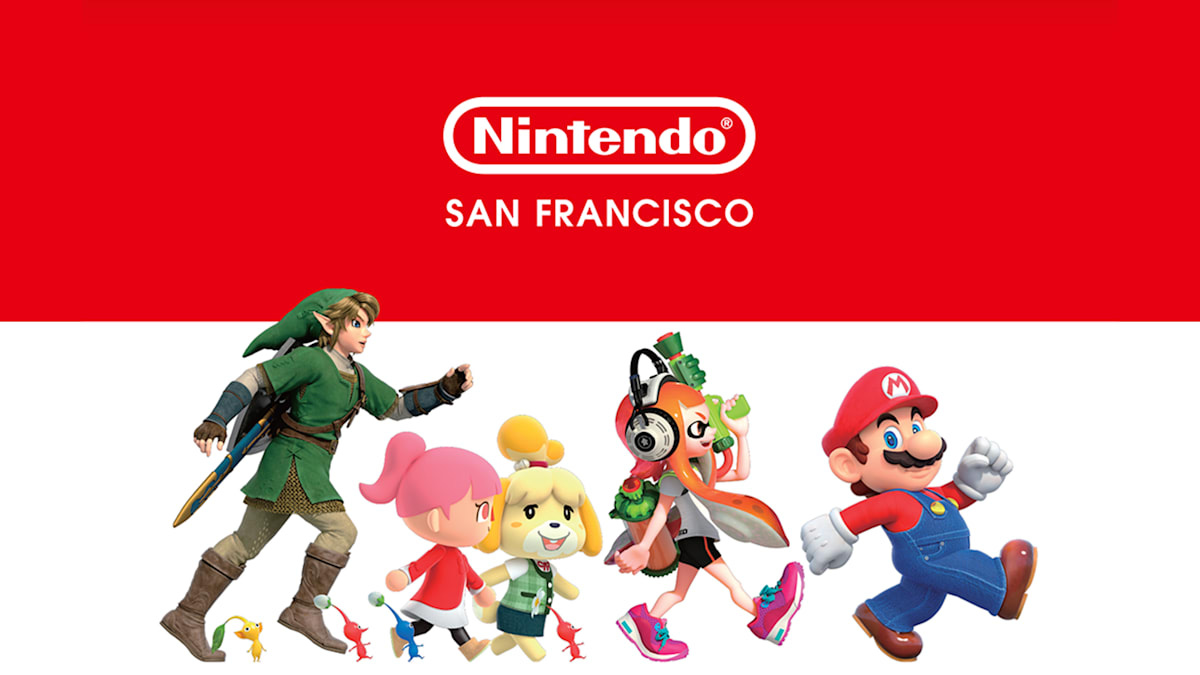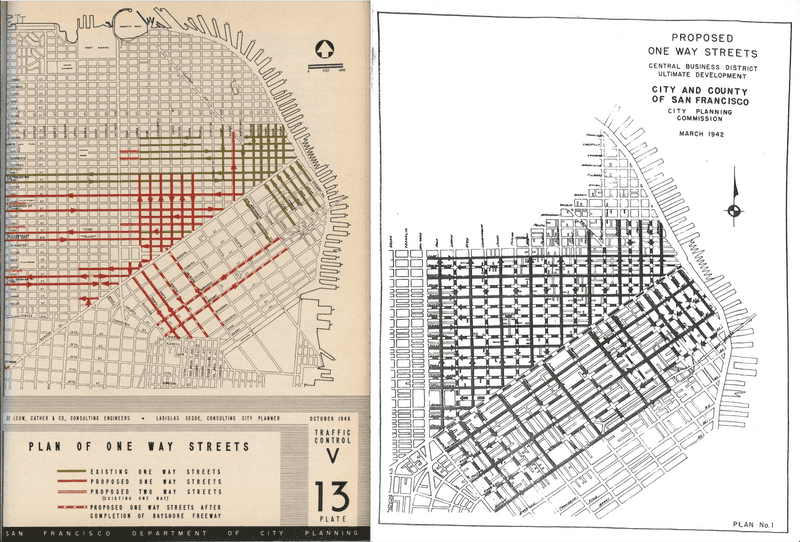SFPD Chief Bill Scott to step down
PLUS: Public Defender refuses cases due to budget fight
What You Need To Know
Here’s what happened around the city for the week of May 4, 2025:
- SFPD Chief Bill Scott announces resignation
- Public Defender refuses cases due to budget fight
- BART ditches Urban Alchemy for safe elevator program
- Free downtown concerts return this summer
Recent & upcoming openings:
- Nintendo Store opens May 15 in Union Square
Research:
- One-way streets are especially dangerous to pedestrians
SFPD Chief Bill Scott announces resignation
Published May 7, 2025
Police Chief Bill Scott is resigning after eight years. Paul Yep, who serves as Mayor Lurie's Chief of Public Safety, will serve as the interim police chief. The Police Commission will now begin the process to find a new chief.
The Facts
Police Chief Bill Scott announced on Wednesday that he will resign after more than eight years in charge of the San Francisco Police Department. Over the next six weeks he will transition the role of Police Chief to the new interim chief, Paul Yep, who currently serves as Mayor Lurie's Chief of Public Safety.
Now the search for a new chief begins. Unlike most other cities, however, the Mayor does not get to pick the new chief. Instead, that responsibility falls to the Police Commission, which is made up of seven members - four picked by the Mayor and three by the Board of Supervisors, though all seats are confirmed or rejected by the Board.
The Context
Scott was hired in 2017 by Mayor Ed Lee after the police shooting of Mario Woods and the resignation of his predecessor, Greg Suhr. Over his tenure, Scott oversaw significant reforms—including body cameras and use-of-force policy updates—while also facing criticism for the department’s declining arrest rate and rising street disorder.
Opinions are mixed on Scott's handling of the George Floyd protests in 2020. The city saw little violence, but plenty of property destruction, and Scott was criticized for not doing enough to protect businesses. And Scott has never explained the cratering of traffic enforcement, which neared just one ticket per day in 2021 and 2022.
The process for picking a new police chief is unusual in San Francisco. Instead of the Mayor getting to pick the chief, as one would expect for a so-called "strong mayor" system, the Police Commission is actually responsible for the selection. The commission is made up of seven members, four of whom are nominated by the Mayor and confirmed by the Board of Supervisors, and three appointed directly by the Board of Supervisors. In effect, this gives the Board of Supervisors control over the selection of the new chief. Luckily, though, the Board of Supervisors has flipped to a pro-safety majority as of the November 2024 election, and has helped reshape the Police Commission to be more pro-safety as well.
The Police Commission is required to present three or more names for a new police chief to the Mayor, who can then confirm one of those candidates.
The GrowSF Take
We've been sometimes critical and sometimes supportive of Chief Scott's tenure. He has made some good changes to the department, but he also stood by while police stopped doing their jobs in protest of Chesa Boudin and let the traffic division stop enforcing any traffic laws. We deserve a police chief who holds cops to a high standard of performance and accountability. We hope the Police Commission finds a highly competent candidate who can restore the department's effectiveness.
Public Defender refuses cases due to budget fight
Published May 9, 2025
Despite the Public Defender's budget doubling over the past ten years, the office now claims it can't accommodate a 15% budget cut and has announced it will stop taking cases one day per week.
The Facts
The San Francisco Public Defender's Office has announced that it will stop taking cases one day per week in protest of a proposed 15% budget cut. The office claims that its attorneys are already overworked due to a recent spike in felony cases against drug dealers.
The Context
Due to a billion dollar budget deficit, Mayor Lurie asked every department to cut 15% of their budgets.
Over the past ten years, the budget for the Public Defender has increased by 80%—from about $27 million in 2012-13, to about $49 million in 2022-23— and headcount by 40%—from 156 to 220 full-time staff—despite caseload remaining largely flat. The proposed budget cut would reduce the office's budget from $49 million to $42 million, or about the budget it had just before COVID.
Every person accused of a crime in the United States has the right to an attorney, and the Public Defender's Office is responsible for providing that service to those who cannot afford private counsel. The decision to stop taking cases is a drastic measure in an ongoing budget negotiation.
The GrowSF Take
The Public Defender's office appears to be misrepresenting the facts and playing politics with the lives of people who need legal representation. The office has had a massive budget increase over the past ten years, and the proposed cut is only to bring it back to pre-COVID levels. The Public Defender's office should be focused on providing quality legal representation, not playing political games.
BART ditches Urban Alchemy for safe elevator program
Published May 8, 2025
Urban Alchemy is laying off 57 workers after losing its BART elevator attendant contract. BART isn't ending the attendant program — just choosing a new provider.
The Facts
Urban Alchemy announced it will lay off up to 57 San Francisco employees after losing a contract for unarmed safety attendants in BART elevators at the Embarcadero, Montgomery, Powell, and Civic Center stations. After running a competitive bidding process, BART switched to District Works, based in Oakland, to run the program.
The Context
The elevator attendant program was created in 2018 to provide unarmed safety attendants in BART elevators, which were notorious for being used as bathrooms and for drug sales. The programs has been staffed by Urban Alchemy employees since the first trial programs at Civic Center and Powell Street stations.
Urban Alchemy has been both praised and criticized in San Francisco. According to their internal data, Urban Alchemy collected tens of thousands of bags of trash, including nearly 60,000 used needles, and disrupted thousands of potentially violent incidents across SF and Oakland in 2023. They can also be credited with reversing thousands of overdoses (thus saving hundreds to thousands of lives). However, some have criticized them over a lack of oversight, transparency, and the nonprofit’s internal operations.
The GrowSF Take
We love the elevator attendant program, and there's no question that it has improved the safety and cleanliness of the elevators. People with limited mobility depend on the elevators to access BART, and they deserve to have safe, clean, and reliable elevators.
Competition is good — especially when it comes to public dollars. BART keeping the ambassador program but switching vendors shows they’re looking for results, not just headlines. That’s a step in the right direction.
Free downtown concerts return this summer
Published May 6, 2025
San Francisco is bringing back free summer concerts downtown for the second year in a row, with a major kickoff June 14 at Embarcadero Plaza. The series, headlined by San Francisco’s own Dirtybird label, aims to boost foot traffic and show that the city’s core is once again a destination for live music, nightlife, and civic pride.
The facts
Mayor Daniel Lurie announced the return of the city’s free downtown concert series in partnership with Another Planet Entertainment and the San Francisco Recreation and Park Department. The season opens with “Back 2 Baysics,” hosted by Dirtybird Records at Embarcadero Plaza on June 14. Future events will bring headliners to Civic Center Plaza and Union Square, continuing through the summer.
The concerts are part of a three-year agreement between Another Planet Entertainment and the City, allowing the company to host paid events in Golden Gate Park in exchange for producing three free concerts annually through 2027.
The context
Last year’s shows, which featured Portugal. The Man, Don Louis, and Sophia Scott, drew tens of thousands of people. The Dirtybird concert alone nearly tripled Sunday foot traffic at Embarcadero Plaza. Local businesses reported surges in sales, and tourism agencies highlighted the shows as a key draw for visitors.
These concerts are just one part of a broader downtown revitalization strategy under Mayor Lurie. Since taking office, the Mayor has prioritized turning downtown into a 24/7 neighborhood—cleaner, safer, and more lively.
In just the past few months, the city has:
Created a permanent SFPD Hospitality Zone Task Force for Union Square and Yerba Buena
Signed legislation for entertainment zones in nightlife districts like the Castro, with more in the works
Expanded the “Vacant to Vibrant” program with new pop-ups downtown, including during NBA All-Star Weekend and the Chinese New Year Parade
Pushed for more liquor licenses to encourage new bars and restaurants to open downtown
Civic and business leaders are enthusiastic. “Downtown is the hub now,” said Sarah Dennis Phillips, Director of Economic and Workforce Development. “Our investments in public-private partnerships and street activations are paying off.”
The GrowSF take
Downtown should be the beating heart of San Francisco—and thanks to free concerts, new nightlife investments, and smart leadership, it’s starting to feel that way again.
Recent & upcoming openings
A great city is constantly changing and growing, let’s celebrate what’s new!
Nintendo Store opens May 15 in Union Square
WHERE: 331 Powell, southwest corner of Union Square
WHEN: Reservation only May 15 through 18, open to all on May 19
Betcha didn’t even know Nintendo had stores! The SF Nintendo Store will be only the fifth store worldwide — joining NYC, Osaka, Tokyo, and Kyoto.
The stores carry the latest Nintendo console, games, and accessories of course — but they also carry Nintendo branded swag like plushies, figurines, and sweatshirts for visitors ill-equipped for the microclimates. But unless you already got reservations, you’ll have to wait until Monday, May 19 to actually get inside.
Research
One-way streets are especially dangerous to pedestrians
Published May 5, 2025
1. San Francisco’s streets are engineered for speed, not safety
Walking in San Francisco often feels like a game of chance. Whether it’s a driver speeding through a crosswalk or a near-miss with a car turning too quickly, close calls are a daily reality. Drivers aren’t spared either—they frequently encounter pedestrians darting into intersections, jaywalkers appearing unexpectedly, or runners with earbuds, oblivious to traffic.
These incidents aren’t just anecdotal. They’re systemic in our city. San Francisco’s streets, particularly its extensive network of one-way roads, are designed to move vehicles quickly, not to protect human life. That flawed design has led to tragic results. In 2014, the city adopted Vision Zero, a policy commitment to eliminate traffic fatalities and severe injuries by 2024. But the goal has not only been missed—it’s been tragically reversed. The year 2024 ended up being one of the most dangerous on record, with 41 people killed in traffic collisions, including 24 pedestrians.
2. One-way streets were built for a different city
San Francisco’s one-way street system wasn’t an accident, it was a deliberate post-war effort to prioritize vehicle access to downtown. Historian John Freeman notes that the first major one-way conversions, Bush and Pine Streets, were implemented in July 1942. The driving force was the construction of the Union Square Garage, a multi-level parking structure with a 1,700 car capacity meant to boost downtown retail. To make it work, city planners needed to create high-capacity corridors that could deliver drivers from the western neighborhoods directly into the commercial core. This required moving the Dewey Monument, altering pedestrian spaces, and reorienting the flow of traffic around Union Square.
These traffic design changes actually first went to the ballot box. Notably, voters rejected the one-way streets change, twice, in 1922 and 1931. But with war-era emergency powers and a brief window of urban transformation, city leaders pushed the plan forward. The irony is sharp: the first one-way street corridors were launched during World War II, a time when gasoline was rationed, driving was discouraged, and cars sat idle on blocks. One-way streets were being built for a kind of future mobility that didn’t yet exist.
The city eventually expanded the one-way system through several main corridors:
Bush and Pine, Turk and Eddy, and Clay and Sacramento were designed to funnel drivers downtown from Van Ness.
Gough and Franklin were specifically aligned to channel vehicles from the Golden Gate Bridge.
This car-centric design philosophy took hold after the war, as public transit use declined and automobile ownership surged. Downtown San Francisco became the region’s retail epicenter, but by the late 1960s, that model began to collapse with the rise of suburban malls, freeway expansion, and population shifts to the suburbs.
As Freeman puts it, “We did this for a lot of outmoded reasons.” These one-way corridors were built to support a mid-century vision of urban life centered on downtown shopping and driving convenience—conditions that no longer define San Francisco.
Source: DeLeuw and Cather's Report to the City Planning Commission on a Transportation Plan for San Francisco (October 1948)
3. Today’s one-way streets are built for speed, not safety
The problem is not just that one-way streets are outdated, it’s that they’re actually dangerous. Many of San Francisco’s most injury-prone intersections are either high-speed one-way corridors or wide, multilane streets where fast turns and high volumes of cars clash with dense pedestrian activity. Let’s call these San Francisco’s “mini-highways.”
One-way streets account for 3.8X the number of injuries in San Francisco versus all other types of streets (according to traffic data from 2020-2025).
Left turns off one-way streets are particularly hazardous. Unlike right turns, which are tighter and slower, left turns can be executed at wider angles and higher speeds. A New York City Department of Transportation study found that left turns occur at an average speed of 9.3 MPH, compared to 5.6 MPH for right turns. These faster, smoother turns also create larger blind spots, especially where a vehicle’s A-pillar—the vertical frame between the windshield and side window—obscures the driver’s line of sight. That visual obstruction makes it easier for drivers to miss pedestrians in the crosswalk.
The A-pillar of your vehicle limits your visibility during a left turn
The structure of one-way street grids also leads to more frequent turns. Research shows that these systems generate 120% to 160% times more turning movements than equivalent two-way grids. This increases the number of interactions between cars and pedestrians—especially at intersections where left turns are common. This is reflected in the data, with almost 27% of vehicle-pedestrian incidents being caused when drivers turned left given that left turns are both faster, and happen more often in our current system.
These dangers are amplified by the street environment itself. Wide lanes, long blocks, and timed lights create conditions that reward speeding. Drivers often accelerate to catch the next green, treating entire corridors like timed racetracks. Streets like Geary, Van Ness, and 13th Street may not all be one-way, but they function as mini-highways, designed for throughput rather than safety.
It’s no surprise that the city’s most dangerous intersections—such as Gough and Market, 13th and Duboce, and Octavia and Market—are all high-speed corridors where car volume from our mini-highways meets pedestrian density. These designs are fundamentally incompatible with Vision Zero’s safety goals.
San Francisco’s Most Dangerous Intersections For Everyone (2017-2022)
Source: SFMTA Traffic Crashes Report 2017-2022
San Francisco’s Most Dangerous Intersections for Pedestrians (2017-2022)
Source: SFMTA Traffic Crashes Report 2017-2022
4. Fixing our one-way streets needs a system-wide change, not a reactive approach of fixing one intersection at a time
Street design, not just behavior, is the primary driver of traffic injuries and deaths. If San Francisco is serious about reducing harm, it must start by confronting the legacy of its one-way streets and their role in promoting unsafe speeds and excessive turning movements.
Lowering vehicle speeds is one of the simplest and most effective ways to save lives. According to Vision Zero data, a pedestrian hit at 20 MPH has a 90% chance of survival, but at 40 MPH that drops to just 40%. Between 2017 and 2022, crashes due to unsafe speeds rose by 25%, confirming that current design strategies are failing.
Research on the dangers of one-way streets has been known for a long time. A study published in May 2000 by the Ontario Transportation Department concluded about one-way streets: “The injury rate was 2.5 times higher on one-way streets than on two-way streets and 3 times higher for children from the poorest neighbourhoods than for those from wealthier neighbourhoods.”
There are proven solutions. In Louisville, Kentucky, converting one-way streets to two-way traffic led to a 23% to 60% reduction in crashes and a 15% to 30% drop in crime. In San Francisco, a redesign of Fell Street—reducing lanes and adding a protected bike lane—resulted in a 38% drop in total collisions and a 50% reduction in pedestrian injuries.
Infrastructure matters. Elevated crosswalks, protected intersections, and pedestrian-priority zones significantly reduce conflict. These are not speculative solutions—they’re already working locally.
Ultimately, San Francisco must reckon with the fact that its one-way street network was built for a mid-century retail economy that no longer exists. The city is no longer defined by suburban shoppers driving downtown. It’s time to build a new system—one that puts people, not speed, at the center of its design.












